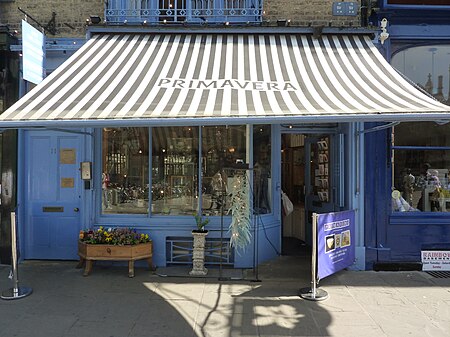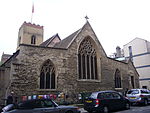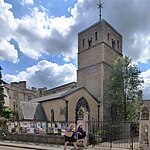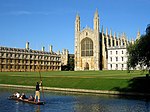Primavera Gallery
1945 establishments in EnglandArt galleries established in 1945Art museums and galleries in CambridgeshireCulture in CambridgeHistory of Cambridge ... and 2 more
Shops in CambridgeUse British English from February 2023

Primavera is a fine arts and crafts gallery at 10 King's Parade in Cambridge, England. Henry Rothschild founded Primavera in 1945 in Sloane Street, London, in order to promote and retail contemporary British art and craft. The Cambridge branch of Primavera was opened in 1959.
Excerpt from the Wikipedia article Primavera Gallery (License: CC BY-SA 3.0, Authors, Images).Primavera Gallery
King's Parade, Cambridge Newnham
Geographical coordinates (GPS) Address Nearby Places Show on map
Geographical coordinates (GPS)
| Latitude | Longitude |
|---|---|
| N 52.204388888889 ° | E 0.11777777777778 ° |
Address
King's Parade 10-11
CB2 1SJ Cambridge, Newnham
England, United Kingdom
Open on Google Maps











